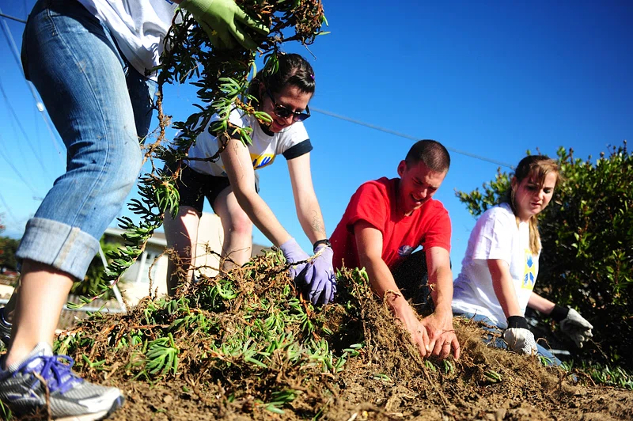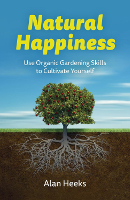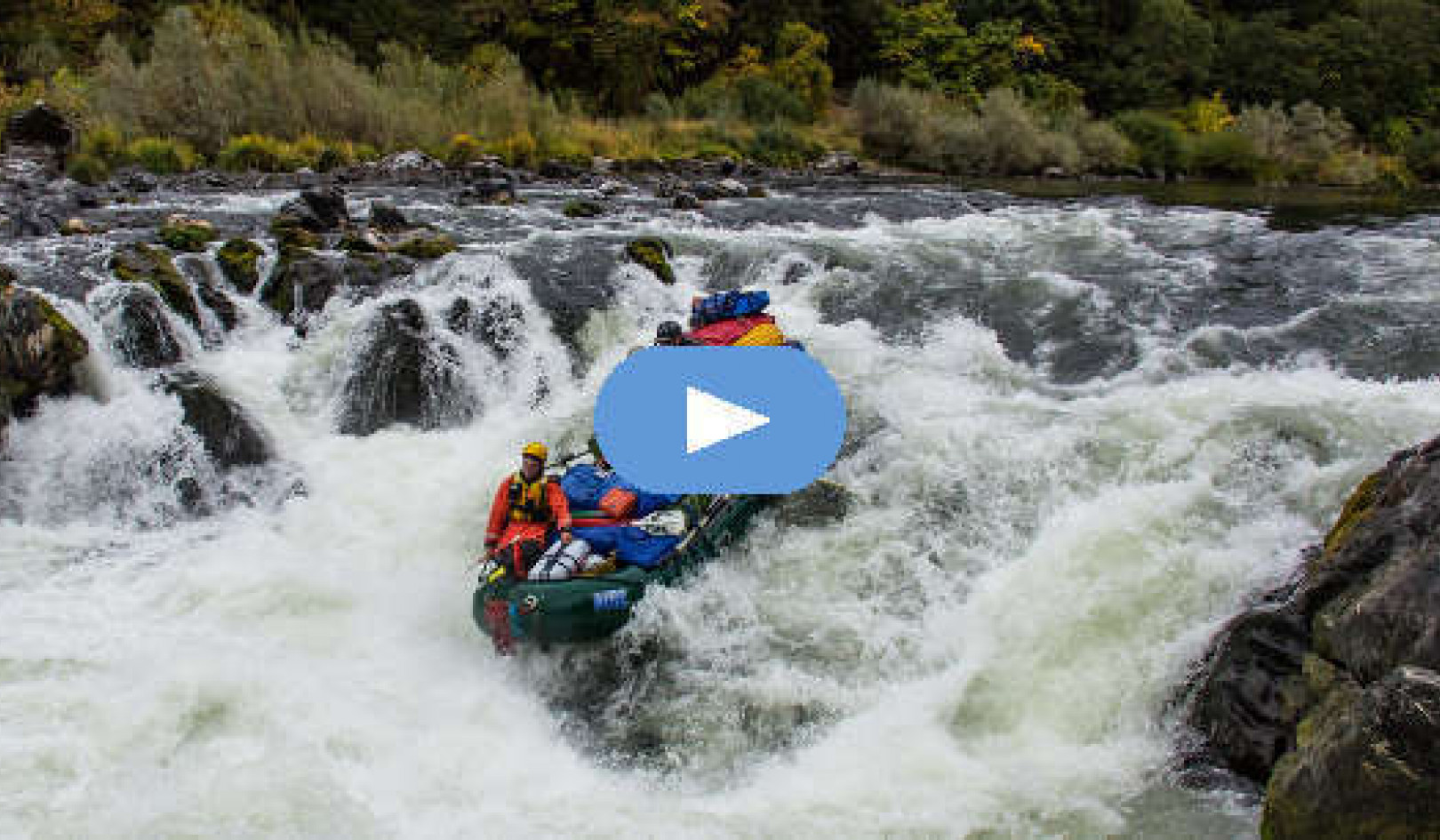
Credit: rawpixel.com
In This Article:
- How can communities raise resilience for the future?
- How we can learn from nature about cultivating community.
- What are wild margins and how can they help foster inclusion?
- What is community-supported agriculture and why does it matter?
- How collective action strengthens community resilience.

A Life of Community Prepares Us for the Future
by Alan Heeks.
The future outlook seems so uncertain and confusing that it’s hard to know how to prepare for it. However, almost everyone agrees that raising resilience in communities will help. As Rob Hopkins, founder of the Transition movement, says: ‘If we wait for governments, it will be too late. If we act as individuals, it will be too little. But if we act as communities, it might just be enough, and it might just be in time.’
In essence, a community is any group of people with a shared purpose. Neighbourhoods and, local communities have a big role in our future resilience. You are probably part of several communities, such as family, work or sports teams, faith or environmental groups.
Community in Nature
Ecosystems depend on many aspects of community to thrive and withstand setbacks. There’s a lot we humans can learn from Nature about fruitful communities. To bring these ideas to life, get onto the land, or at least imagine doing so.
In my workshops, I sometimes invite people to picture their life as a whole, or their position in a community, as an ecosystem and then map it. To do this, imagine a community group or some other situation as a garden, a farm, or a forest, and draw a picture in which elements of a natural system represent parts of it. For example, a vegetable garden could represent the task functions of the group, an orchard the longer-term work, a neglected woodland glade could signify the vision that you don’t connect with enough. By creating a drawing, you make it easier to translate ecosystem features to meet your needs, such as wild margins or companion planting.
Another approach is to imagine yourself as a gardener, and the group as the garden. Even if you’re not the leader, this can be helpful. It enables me to accept people’s quirks and independent thinking in the same way that I recognise that each plant or tree has a will of its own. And when I think of cultivating a group, my approach becomes more patient and co- creative.
Community on the Farm
Traditionally, most British agriculture was based on smallish mixed farms, with a range of enterprises: vegetables, arable crops and livestock — maybe 20 milking cows, a few pigs, chickens and so on. These days, most British agriculture is industrial scale, dependent on a single crop or type of livestock. I share the view that smaller mixed farms can provide a better balance of fair productivity, high sustainability and good resilience. Some of these farms have had remarkable results in carbon sequestration too.
Here are some of the community approaches we humans can learn from:
Supportive enterprises: On a mixed farm, the activities support each other. Arable crops provide food and bedding for livestock, and animals provide manure to fertilise the fields. Crop rotation renews the land without chemicals. And diversity adds resilience: if one enterprise fails, others should still support you. For human communities, this highlights the value of diverse skills and mutual support.
Wild margins: This is one of my favourite principles in organic systems. To qualify for organic certification, a farm must leave some field corners and edge land wild, uncultivated. These margins are a haven for wildflowers, plants, birds, insects. Diversity of wildlife and plants has many benefits for humans; for example, if a new pest or disease affects your plants, you can hope that its antidote is hanging out in the wild margins.
How does this work for communities? I’ve seen many groups who find it hard to include and tolerate divergent and challenging views. The problem is aggravated because ‘wild margin’ people often feel isolated, angry, and may lack the communication skills to make their points diplomatically. When a group feels threatened and criticised, it’s tempting to turn against minority members, to scapegoat or exclude them.
One benefit of the wild margins analogy is to show the potential insights in divergent views. If the majority of a group can learn patience and skills to hear the essence under challenging language, they will access more wisdom and solutions. Nelson Mandela, in solitary confinement for many years on Robben Island, seemed an unlikely person to resolve apartheid in South Africa, but mainstream society’s crises are often solved from an unlikely and marginal source.
Community-supported agriculture: For many organic market gardens and farms, there’s a fuzzy boundary between who’s staff and who’s customers. Community-supported agriculture (CSA) means that customers commit to buy a share of whatever produce there is, for a weekly subscription, and they also put in some time as volunteers to help with production, harvesting and packing. This means that producers have assured income even if harvests are poor, and they can keep their prices affordable. It’s a great role model for a more fluid, collaborative approach which a lot of human communities will need in future.
Community in the Forest
Ever since my connection with Hazel Hill Wood began in 1987, I experience the wood as a community in many ways: read Peter Wohlleben’s book The Hidden Life of Trees, which provides ample research evidence. Here are some qualities we can learn from.
The fellowship of trees: Wohlleben’s book quotes research to show that trees have some ability to sense, respond and communicate so they form living communities. A solo tree can be vulnerable to wind, pests and other threats. Trees use their collective strength: for example, to share nutrients, to warn each other of threats, to absorb and reduce high wind. Societies like Britain over-focus on individuals and fail to teach us the skills for collective living. We need role models, and the woods and forests provide one.
Symbiosis: This term describes mutual support between organisms. Every element of the ecosystem contributes: insects, birds, flowers, trees, and so on. They can provide protection, food, reproduction and more. For example, birds are attracted to a plant with bright berries: they eat them, and scatter the seeds across the forest to expand the plant’s presence. We humans often want to see a return when we give something. The insight from symbiosis is that if we all give what we can, without expecting a direct payback, all of our needs are more likely to be met.
Community in the Garden
Especially if you’re a gardener, you’ll probably see that many of the ideas above apply in gardens too. Let’s explore a few more.
Crop rotation: This is an important method for vegetable growers, and for arable farmers. One benefit is soil health: by growing different crops each year on a given piece of soil, you reduce the risk of pests and plant diseases. The second is renewal rotation: after farmers grow a crop like wheat which demands a lot of nutrients, they renew fertility in the land by growing a crop which has limited income value, but fixes nitrogen from the air into the soil, such as clover.
Both aspects of crop rotation are useful for human communities. Groups who repeat the same activities get stale, and sometimes need to initiate more change deliberately. The idea of following a demanding task by something light or playful is one I use all the time for myself and in groups.
Raising diversity: This helps the resilience of any system. More variety in the crops you grow means that if one or two fail, you have others. In our garden, we plant a couple of different varieties of each crop, such as tomatoes or apple trees. Often a pest or disease only affects one variety.
In groups of people, similar approaches or skills may make things flow easily, but you might lack what you need for an unfamiliar challenge. As with wild margins, it’s worth making an effort to include people who bring divergent methods and capabilities.
How Nature Brings People Together
There’s a growing movement to create community gardens, many of them in neighbourhoods with social and economic hardship. Often these are market gardens, providing healthy, affordable food. They are also havens of peace in urban jungles, lovingly cared for and decorated.
These gardens have proved a great way to bring isolated individuals and fragmented neighbourhoods together. If you have a couple of experienced gardeners, everyone else can learn from them. They enable social connections between old and young, and for people with mental or physical health issues. It’s a touching example of the benefits of communities that include both Nature and people.
Most of the workshop groups I run are at venues like Hazel Hill Wood, where we can spend a lot of time outdoors, connecting with Nature, not just with each other. People often say they feel a different sense of community, where the humans are in it with all other forms of life. And this leads to new insights, vitality and creativity. So if you want to deepen the community qualities in a group you’re involved with, get outdoors!
In my Nature Resilience Immersions for doctors, we faced the issue of how to bring them present, as they arrived rigid with stress, and only functioning on the mental plane. The solution we found was conservation activity. I explained that we wanted to focus them away from sick humans, onto a healthy ecosystem.
They loved having an easy physical task with clear results, where they could socialise with each other. Not only did they relax and become present, they also opened from a purely individual focus to a cooperative one. So active gardening is a great way to help a group become a community.
Copyright 2024. All Rights Reserved.
Book by this Author:
BOOK: Natural Happiness
Natural Happiness: Use Organic Gardening Skills to Cultivate Yourself
by Alan Heeks.
 Natural Happiness can help you dig deep and stay cheerful in these stormy times. A gardener applies skills like observation, patience and creativity - and you can adapt them to deal with daily stresses and big issues such as climate change. Alan shows how you can use gardening methods such as composting, mulching, and crop rotation to cultivate human nature, too.
Natural Happiness can help you dig deep and stay cheerful in these stormy times. A gardener applies skills like observation, patience and creativity - and you can adapt them to deal with daily stresses and big issues such as climate change. Alan shows how you can use gardening methods such as composting, mulching, and crop rotation to cultivate human nature, too.
Natural Happiness explores Alan’s Seven Seeds of Natural Happiness, which grows from 30 years’ experience of helping people learn from nature, and from creating gardens and an organic farm.
For more info and/or to order this book, click here. Also available as a Kindle edition.
About the Author
 Alan Heeks is a group leader, author and pioneer who has over 30 years' experience helping people to grow their wellbeing through contact with Nature. He left a successful business career to set up a 130-acre organic farm and education centre, and the Seeding our Future project, which helps individuals, local communities and NHS doctors to build resilience in the face of climate change and other stresses.
Alan Heeks is a group leader, author and pioneer who has over 30 years' experience helping people to grow their wellbeing through contact with Nature. He left a successful business career to set up a 130-acre organic farm and education centre, and the Seeding our Future project, which helps individuals, local communities and NHS doctors to build resilience in the face of climate change and other stresses.
Visit his website at AlanHeeks.com/
Article Recap:
This article highlights the importance of cultivating community to build resilience for an uncertain future. Drawing inspiration from nature’s ecosystems, it explores how communities can thrive by embracing diversity, mutual support, and collective action. Key concepts like wild margins, community-supported agriculture, and symbiosis provide valuable lessons for creating more resilient human communities. By fostering collaboration and inclusion, communities can better withstand challenges and prepare for an uncertain future.



























